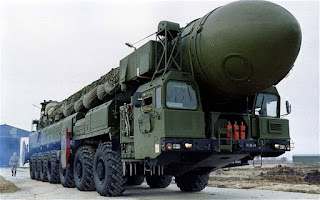An e-bomb (electromagnetic bomb) is a weapon that uses an intense electromagnetic field to create a brief pulse of energy that affects electronic circuitry without harming humans or buildings. At low levels, the pulse temporarily disables electronics systems; mid-range levels corrupt computer data. Very high levels completely destroy electronic circuitry, thus disabling any type of machine that uses electricity, including computers, radios, and ignition systems in vehicles. Although not directly lethal, an e-bomb would devastate any target that relies upon electricity: a category encompassing any potential military target and most civilian areas of the world as well. According to a CBS News report, the United States deployed an experimental e-bomb on March 24, 2003 to knock out Iraqi satellite television and disrupt the broadcast of propaganda.
In the United States, most e-bomb research has been carried out at the Air Force Research Laboratory at Kirtland Air Force Base in New Mexico, where researchers have been exploring the use of high power microwaves (HPM). Although the devices themselves may be relatively uncomplicated to manufacture (Popular Mechanics illustrated a simple design in September 2001), their usage poses a number of problems. To create an effective e-bomb, developers must not only generate an extremely high-powered pulse of energy, but must also find a way to control both the energy - which can behave in unpredictable ways - and the heat generated as its byproduct. Furthermore, for non-nuclear e-bombs, the range is limited. According to most defense analysts' speculations, devices in development are likely to affect an area of only a few hundred yards.
The concept behind the e-bomb arose from nuclear weaponry research in the 1950s. When the U.S. military tested hydrogen bombs over the Pacific Ocean, streetlights were blown out hundreds of miles away and radio equipment was affected as far as away as Australia. Although at the time these effects were considered incidental, since that time researchers have sought a means of focusing that energy.

